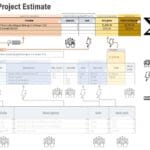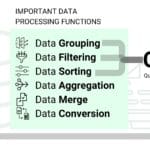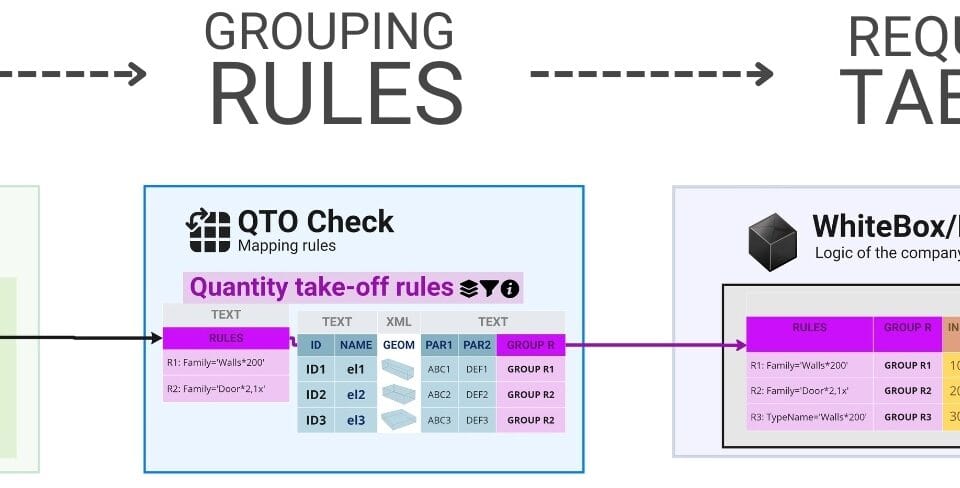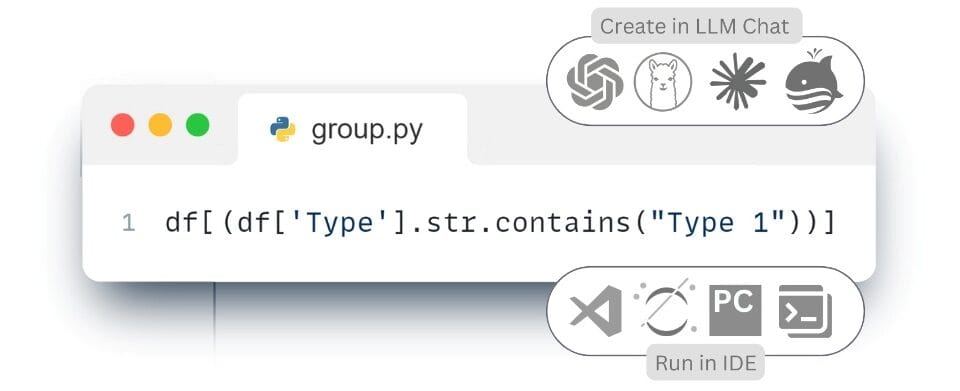With the costing tables with the described processes through the resources (Fig. 5.1-8) in hand, the next step is to automatically obtain the volume or quantity parameters for a group of elements that are needed for the calculations and for the final estimate.
Volumetric characteristics of project elements – e.g. walls or slabs – can be automatically extracted from CAD databases. Parametric objects created in CAD programs are converted by means of geometry kernel into numerical values of length, width, area, volume and other parameters. The process of obtaining volumes based on 3D geometry will be discussed in more detail in the next, sixth part (Fig. 6.3-3), dedicated to working with CAD (BIM). In addition to volumes, the number of similar elements can also be obtained from the CAD-model database by filtering and grouping objects by categories and properties. These grouping parameters become the basis for linking the project elements through resource calculations to the calculations, final estimate and budget of the entire project.
Thus, the data model extracted from the 3D (CAD) model is augmented with new parameter layers, denoted as 4D and 5D. In the new entity attribute layers, 4D (time) and 5D (cost), 3D geometric data are used as a source of entity volume attribute values.
4D is a parameter information layer that adds information about the duration of construction operations to the 3D parameters of elements. This data is required for planning work schedules and managing project timelines
5D is the next level of extension of the data model, in which the elements are supplemented with cost characteristics. Thus, the financial aspect is added to the geometric information: the cost of materials, works and equipment, which allows to perform budget calculations, analyze profitability and manage costs during the construction process.
Cost and 3D, 4D and 5D attribute data of groups of project entities are described in a similar way to costing in modular ERP, PIMS -systems (or Excel -like tools) and are used for automatic costing and budget planning of both individual groups and the full project budget.






















